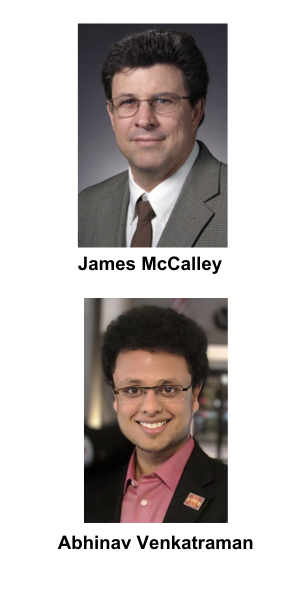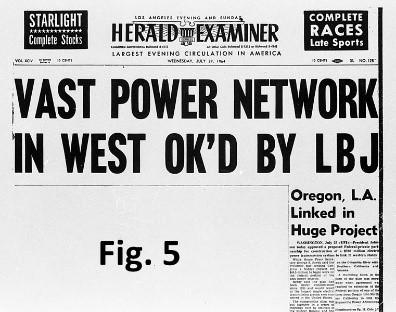The Interconnections Seam Study, led by the National Renewable Energy Laboratory and completed in 2018, provided one of the first in-depth analyses of benefits associated with a North American high-capacity multiregional HVDC transmission overlay, referred to as a macrogrid. In 2022, ESIG developed a report on macrogrid design study requirements. Further work is ongoing via the U.S. Department of Energy’s National Transmission Planning Study. One of the nation’s largest advocacy organizations for renewables, the American Council on Renewable Energy, established the Macro Grid Initiative to advocate for macrogrid policy and investment. And the National Infrastructure Bank Act of 2023, introduced in the U.S. House of Representatives as HR 4052, provides $80 billion toward “a new grid overlay to transport renewable energy.”
North American high-capacity multiregional HVDC transmission overlay, referred to as a macrogrid. In 2022, ESIG developed a report on macrogrid design study requirements. Further work is ongoing via the U.S. Department of Energy’s National Transmission Planning Study. One of the nation’s largest advocacy organizations for renewables, the American Council on Renewable Energy, established the Macro Grid Initiative to advocate for macrogrid policy and investment. And the National Infrastructure Bank Act of 2023, introduced in the U.S. House of Representatives as HR 4052, provides $80 billion toward “a new grid overlay to transport renewable energy.”
It would seem that we are well on our way to developing a transmission superhighway. Are we? Our answer is a resounding “yes, …but,” and we explain why in this blog using three words: motivation, implementation, and orchestration.
Motivation
The ability to move the most economically attractive renewable energy to load centers is primary. However, the macrogrid also produces substantial economic benefits from diurnal load diversity and the ability to share energy and ancillary services across time zones; and from annual peaking diversity and the ability to enhance reliability and save money by sharing capacity across geographical regions. Additional reliability benefits are obtained through the control capability of voltage source converters. The macrogrid also enhances resilience through the ability to move energy during extreme events. Finally, it “buys” not only long-distance transmission but local transmission as well, by offloading the underlying AC grid. Doing so reduces the number of transmission projects necessary to reach certain renewable objectives, providing a path to transmission expansion that may not exist otherwise. To illustrate, Figure 1 plots the cost of new AC transmission needs for 2050 conditions in the Eastern Interconnection (EI) as a function of East Coast offshore wind (OSW) capacity, with and without a U.S. macrogrid in place. At any level of offshore wind, the macrogrid reduces the amount of the Eastern Interconnection’s AC transmission needs. One can consider this in terms of cost or in terms of number of AC transmission projects; for example, at an offshore wind capacity of 160 GW, there is a $45 billion savings, or, if each AC project costs $1 billion, the macrogrid would eliminate 45 AC expansion projects. Reducing the number of AC expansion projects is highly attractive in the population-dense East Coast.

Figure 1. 2050 Eastern Interconnection AC Transmission Investment Cost as a Function of Offshore Wind Capacity
Source: Abhinav Venkatraman Research Notes, Iowa State University, 2023
Implementation
At this time, there exists no shovel-ready plan to build the macrogrid. On the other hand, there is a great deal of activity related to the development of HVDC segments. Figure 2 shows existing HVDC lines in blue (and green for back-to-back); proposed lines are in red. The black-dashed lines represent one macrogrid topology. It is not hard to see that a significant amount of the macrogrid is already in place or is being considered.

Source: James McCalley, Research Notes, Iowa State University, 2023
The macrogrid motivates and enables three promising features, as conceptualized in Figure 3.

Figure 3. Macrogrid conceptualization.
Source: Abhinav Venkatraman, Research Notes, Iowa State University, 2024.
- Potential for underground: Given that the entire macrogrid will be HVDC, it is possible, since it avoids AC line charging, and attractive, since it becomes less visible, to run parts of it underground, taking advantage of riverways and existing rights-of-way via interstate highways and railways.
- Transportation integration: The ability to deploy the macrogrid along interstate highways offers opportunities to integrate macrogrid design with innovation for other infrastructure, including, for example, the inclusion of “highway-top” PV solar and recently developed people movers.
- Lossless, high-capacity transmission: Although HVDC transmission incurs less losses per MW-mile than AC transmission, they are non-negligible. One way to reduce these losses while simultaneously obtaining large capacities is to deploy superconductors. Ongoing research and development efforts suggest that nitrogen-cooled superconductors hold significant promise in this direction.
Orchestration
Figure 2 cries out for orchestration among the various HVDC projects. Where will the terminals be placed? What technologies will be used? How will the various projects be operated? How will regional markets be affected? Who will own the segments? And who will pay for them? Most of the segments are being proposed by merchant developers, yet the involved parties include local utility companies, regional transmission organizations (RTOs), load-serving entities, state governments, federal agencies, and equipment manufacturers. Balancing the interests of these diverse entities is daunting; yet, the industry has been here before, in terms of developing transmission on a geographically expansive scale to serve a complex group of organizations having only partially aligned and even competing interests. For example, American Electric Power completed the construction of 2116 miles of 765 kV transmission in 1969. The Electric Reliability Council of Texas (ERCOT) completed the construction of 3500 miles of 345 kV “CREZ” (competitive renewable energy zone) transmission in 2013. And the Midcontinent Independent System Operator (MISO) completed 3655 miles of mostly 345 kV “MVP” (multi-value projects) transmission in 2021.
But one effort stands out in terms of offering insights useful for moving the macrogrid forward — the development of the Pacific AC and DC Interties of the 1960s. As described in the 2008

Figure 4. Kennedy, Udall, and Luce.
Source: Sante Fe New Mexican Newspaper
See Nature’s advocate: A new biography illuminates Stewart Udall | Books | santafenewmexican.com
Portland State University thesis of J. Binus, “Bonneville Power Administration and the Creation of the Pacific Intertie,” this work, involving a wide array of organizations, was orchestrated by Charles Luce, the Administrator of the Bonneville Power Administration (BPA). Not only did Luce have the engineering and policy expertise of the BPA at his disposal, but he was also authorized from the highest levels of the federal government, with the decision to appoint him chair of an intertie development task force coming from Secretary of the Interior Udall, with support from President Kennedy (see Figure 4). Luce implemented a highly effective approach called the “Yardstick” where he presented a federal plan to develop the interties against which competing plans would be measured. He then invited affected organizations to express “declarations of interest,” including their design preferences, to participate in intertie construction, essentially communicating that non-participation meant the federal plan would be imposed on their territories.

Figure 5. Pacific AC and DC Interties approved by President Johnson, July 29, 1964.
Source: Los Angeles Herald Examiner.
In July 1964 the development of the Pacific AC and DC Interties was approved by President Johnson (see Figure 5). Similarities between this situation and today’s macrogrid development include (i) the transmission project was expansive, with significant technological uncertainty; (ii) the energy forms (hydro back then; wind/solar today) were and are location-constrained; (iii) decisions affected multiple organizations and states; and (iv) there were significant questions of who builds it, who owns it, who pays for it, who operates it, and who uses it. The most important difference between then and now is that Luce, as an active, strong leader with trusted expertise, vested interest, and legitimate authority, provided the necessary orchestration to ultimately move all organizations in a single direction.
And so … are we well on our way to developing a transmission superhighway? Yes, we are. The motivation is strong, and we have taken some important implementation steps, though certainly more innovation remains. So why the “but…”? Our orchestration today is weak. Where is the macrogrid’s BPA? Where is its Charles Luce?

It is a good initiative with lots of research support. Perhaps this model will be more useful to the developing nations like India, where abundant resources and scope for utilisation are under disposal. My appreciation to the good efforts put up by the researchers!